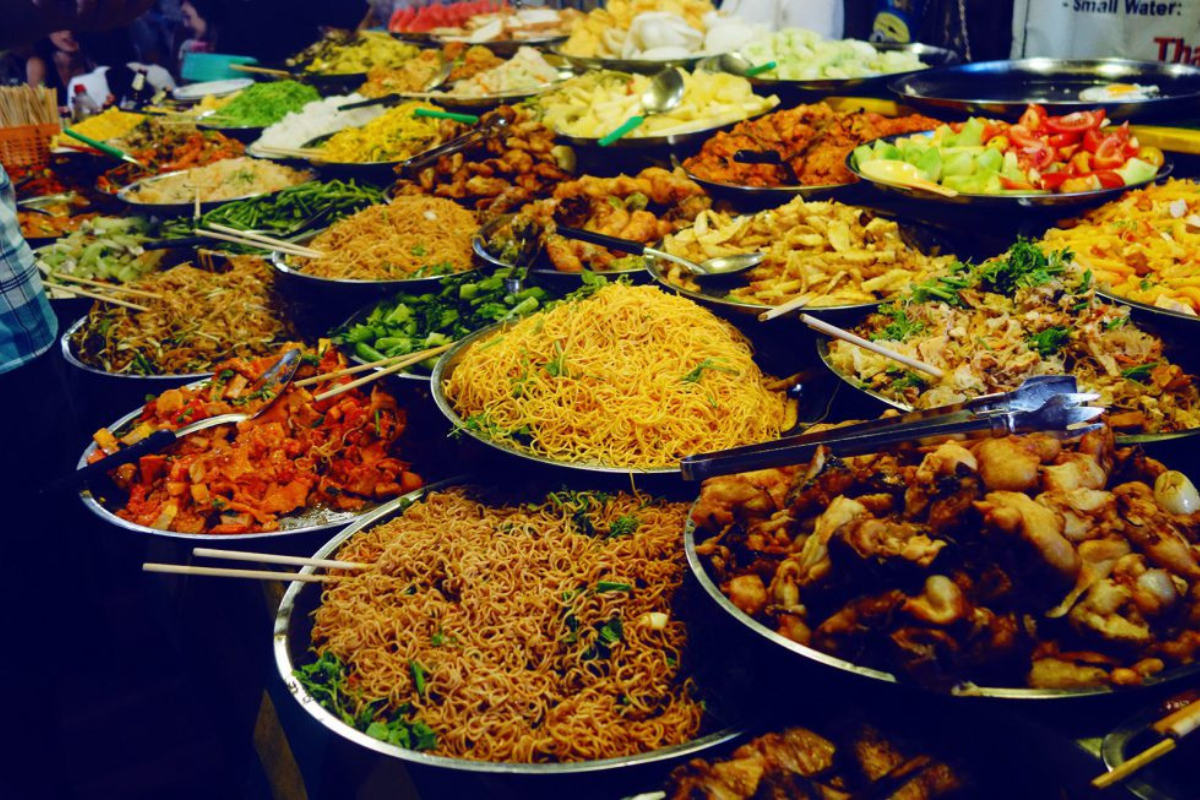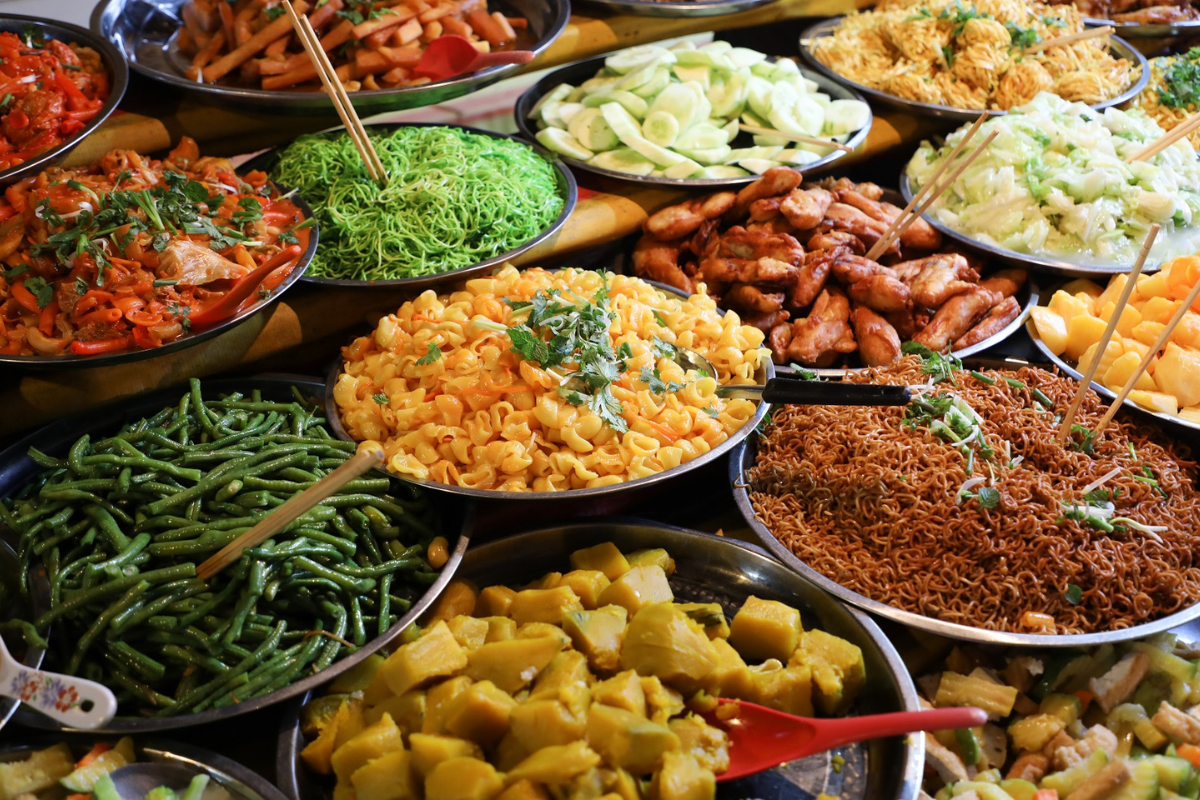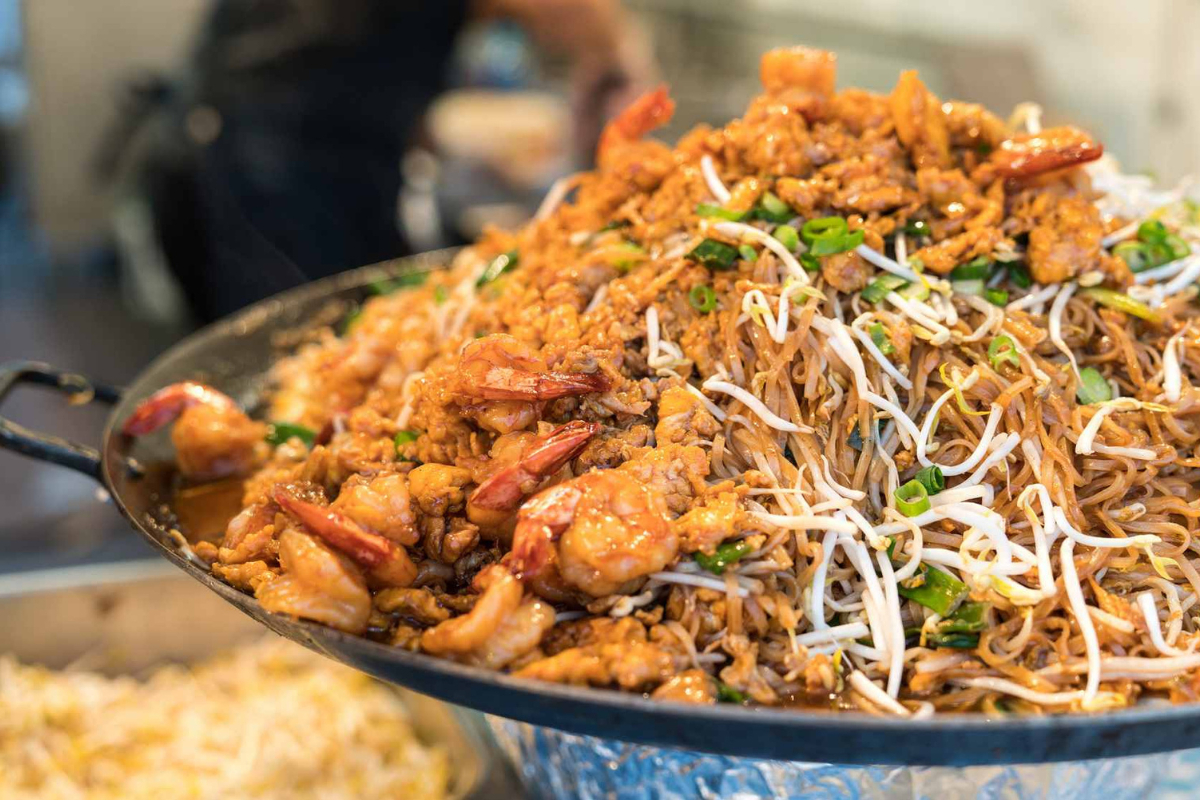In the vibrant tapestry of Southeast Asia, where cultures converge and traditions intertwine, a culinary revolution has taken center stage, transforming the streets into tantalizing arenas of flavor and aroma. Street food, once considered a mere necessity for sustenance, has ascended to an art form, captivating the hearts and palates of locals and visitors alike.

Photo: Asian Inspirations
The street food revolution in Southeast Asia is deeply rooted in the region’s rich culinary heritage. From the aromatic spices of Indonesia to the fiery chilies of Thailand, the flavors of Southeast Asia reflect a harmonious blend of indigenous traditions and the influences of foreign traders and explorers. Street food vendors, often family-run businesses passed down through generations, have preserved and evolved these culinary legacies, bringing them to life with passion and expertise.
This culinary heritage has been enriched by innovation, as street food vendors constantly experiment and adapt, incorporating new ingredients and techniques to keep their offerings fresh and exciting. The fusion of traditional flavors with modern culinary trends has given rise to a unique and dynamic street food scene that is constantly reinventing itself.
A stroll through the bustling streets of Southeast Asia is a sensory overload, a symphony of flavors, aromas, and sights that ignite the appetite and tantalize the senses. The air is perfumed with the enticing scents of garlic, ginger, lemongrass, and chili, while the vibrant colors of fresh produce, steaming curries, and sizzling skewers create a feast for the eyes.
The flavors of Southeast Asia are bold, complex, and addictive. Each dish tells a story, reflecting the region’s diverse cultures and the ingenuity of its street food vendors. From the fiery curries of Thailand to the delicate balance of sweet, savory, and sour in Vietnamese cuisine, the street food scene in Southeast Asia is a culinary adventure that never ceases to amaze.

Photo: Enchanting Travels
A cultural phenomenon that transcends social boundaries
Street food in Southeast Asia is not merely a source of sustenance; it is a cultural phenomenon that transcends social boundaries and brings people together. From bustling markets to quiet alleyways, street food stalls serve as community hubs, where locals and visitors alike gather to share a meal, engage in conversation, and immerse themselves in the vibrant atmosphere.
The affordability and accessibility of street food make it a ubiquitous and inclusive culinary experience. From hawker centers in Singapore to roadside stalls in Vietnam, street food caters to all tastes and budgets, ensuring that everyone can partake in this culinary celebration.
The street food revolution in Southeast Asia is not just about satisfying appetites. It is about preserving and enriching a culinary legacy. Street food vendors play a vital role in safeguarding traditional recipes and techniques, passing them down through generations, and ensuring that the region’s rich culinary heritage remains alive and vibrant.
For those seeking an authentic and immersive culinary experience, Southeast Asia’s street food scene offers an unparalleled adventure. From the bustling night markets of Bangkok to the hidden gems tucked away in the alleyways of Hanoi, the region’s streets are a treasure trove of flavors and aromas that will tantalize the senses and leave you craving for more.
Southeast Asia, a region renowned for its rich culture, vibrant traditions, and breathtaking natural beauty, is also a paradise for food enthusiasts. From the bustling streets of Bangkok to the hidden gems tucked away in the alleyways of Hanoi, the region’s culinary scene is a treasure trove of flavors and aromas that will tantalize the senses and leave you craving for more.

Photo: Trip Savvy
Pad Thai: A culinary rhapsody from Thailand
Pad Thai, a culinary icon of Thailand, is a stir-fried noodle dish that has captivated taste buds worldwide with its symphony of flavors. Thin, flat rice noodles dance in a harmonious blend of sweet, sour, and savory notes, creating an irresistible culinary experience. The addition of crunchy peanuts, succulent shrimp, or tender chicken elevates the dish to new heights, adding layers of texture and taste that tantalize the senses.
Pad Thai is more than just a meal; it is an embodiment of Thailand’s culinary heritage, a dish that reflects the country’s warmth, hospitality, and passion for food. Every bite is a testament to the ingenuity and creativity of Thai street food vendors, who have transformed a simple noodle dish into a global culinary icon.
Pho: Unveiling the culinary soul of Vietnam
In the realm of Vietnamese cuisine, few dishes hold as prominent a position as Pho, a traditional noodle soup that has captivated the hearts and taste buds of generations. Its origins trace back to the bustling streets of Hanoi, where humble street vendors began crafting this culinary masterpiece.
The essence of Pho lies in its delicate simplicity, a harmonious blend of flavors that epitomizes Vietnamese culinary finesse. Its centerpiece is a steaming bowl of fragrant broth, the result of simmering beef or chicken bones for hours, yielding a rich, umami-laden liquid that forms the foundation of the dish.
Nasi Goreng: A culinary canvas of Indonesia and Malaysia
In the vibrant culinary landscape of Indonesia and Malaysia, Nasi Goreng reigns supreme as a beloved staple, a dish that has captivated taste buds with its versatility and irresistible flavors. Its name, aptly translating to “fried rice,” hints at its humble origins, yet Nasi Goreng has evolved into a culinary masterpiece, a canvas upon which a symphony of flavors and textures unfold.
Whether served as a hearty breakfast, a satisfying lunch, or a comforting dinner, Nasi Goreng stands as a culinary masterpiece, a testament to the enduring power of simple flavors and the creativity of Indonesia and Malaysia’s culinary heritage.
This is just a small sampling of the many delicious street foods that can be found in Southeast Asia. With so much to offer, it is no wonder that the region is a culinary paradise for food enthusiasts from all over the world.

